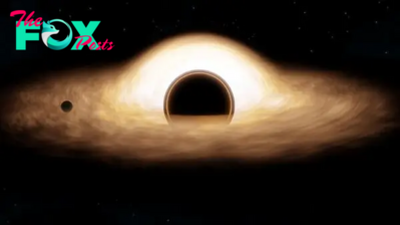Science
Comet predicted to light up Earth's skies this fall may be falling apart
An incoming comet that could be visible to the naked eye as it passes Earth later this year may be doomed to disintegrate before we get the chance to see it up close, a new study suggests. Recent observations hint that the comet has already begun fragmenting and could fall apart completely in the next few weeks or months. However, some experts disagree.
Astronomers at the Purple Mountain Observatory in China first spotted comet C/2023 A3, also known as Tsuchinshan-ATLAS, on Jan. 9 2023 and it was confirmed on Feb. 22 the same year, when NASA's Asteroid Terrestrial-impact Last Alert System (ATLAS) spotted it barreling toward the sun. The comet's trajectory hints that this could be its first-ever close approach to the sun and that it may eventually be ejected from the solar system.
C/2023 A3 is due to reach its closest point to the sun, or perihelion, on Sept. 27 and could make its closest pass to Earth on Oct. 13, when it will be around 44 million miles (71 million kilometers) from our planet. If the comet wanders this close to Earth, it will be as bright as most stars in the night sky, making it possible for people to spot it with the naked eye for several weeks.
But in a new study, uploaded July 8 to the preprint server arXiv, study author Zdenek Sekanina — an astronomer at NASA's Jet Propulsion Laboratory who has been studying comets for more than 50 years — argues that C/2023 A3 may meet its end before it reaches perihelion.
"The comet has entered an advanced phase of fragmentation, in which increasing numbers of dry, fractured refractory solids stay assembled in dark, porous blobs of exotic shape," Sekanina wrote in the paper. These fragments will eventually become "undetectable as they gradually disperse in space," he added.
Related: Explosive 'devil comet' grows seemingly impossible 2nd tail after close flyby of Earth — but it's not what it seems

Large comets normally fragment at perihelion, as the sun's immense gravity tugs on the icy objects. This is what happened to comet ISON, which was violently ripped apart during a solar flyby in 2014, according to the European Space Agency.
-

 Science1d ago
Science1d agoGet one of our favorite star projectors for less than $20 at Amazon
-

 Science1d ago
Science1d agoJuly's full 'Buck Moon' rises this week — and signals a big lunar transition is on the way
-

 Science1d ago
Science1d agoEarth's plate tectonics fired up hundreds of millions of years earlier than we thought, ancient crystals reveal
-

 Science1d ago
Science1d agoJoin Space.com's 25th Anniversary Virtual Panel on July 17: The Next 25 Years of Space Exploration — To the Moon, Mars and Beyond
-

 Science1d ago
Science1d ago20 satellites fall from sky after catastrophic SpaceX rocket failure, triggering investigation
-

 Science2d ago
Science2d agoBlack hole growth is slowing down in the universe. New research could help explain why.
-

 Science2d ago
Science2d agoWhat would happen if a black hole wandered into our solar system?
-

 Science2d ago
Science2d agoEarth from space: Gravity waves spark pair of perfect cloud ripples above uninhabited islands



























